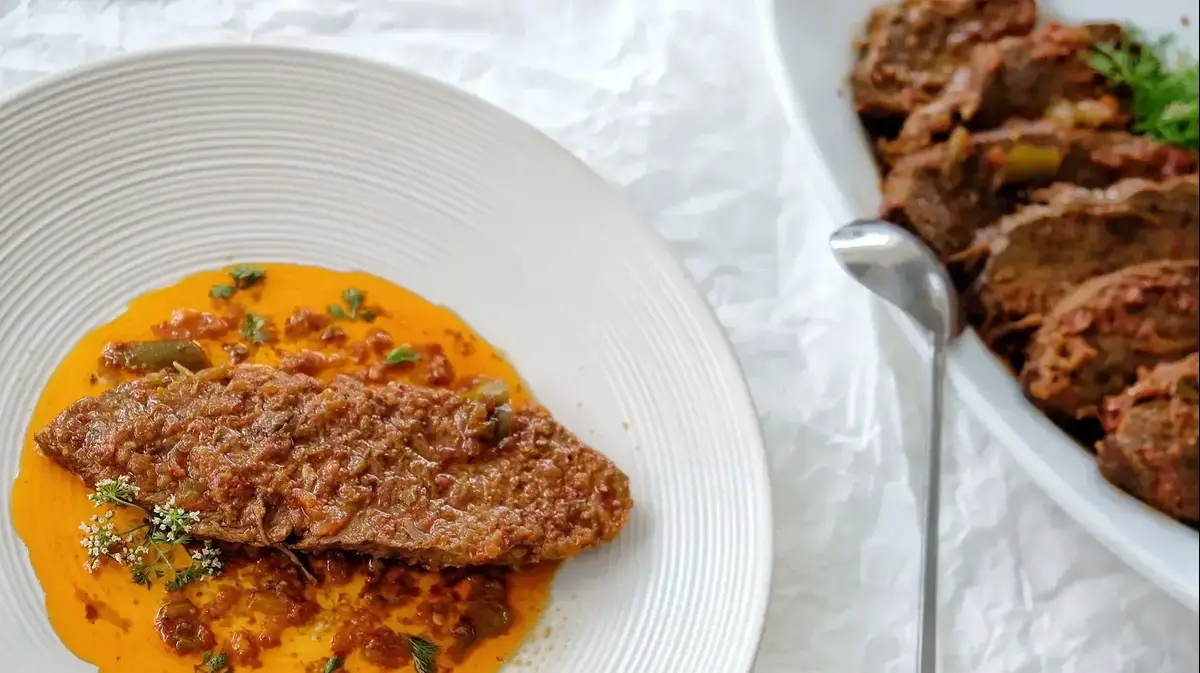There is a trick to always make meat juicy and tender: From now on, roast it backwards
Created: 07/10/2022 08:03
By: Anne Tessin
Meat should be a special treat and therefore it is important to prepare it properly.
Meat stays particularly juicy and tender if you roast it backwards.
With a balanced diet, meat should not end up on the plate too often.
It is all the more important that it is perfectly prepared when it comes to the table - but especially at Christmas.
If you have had bad experiences with tough, dry meat in the past, you will be particularly interested in this roasting method.
When roasted backwards, it remains particularly tender and juicy - just like in a good restaurant.
"Back roasting" promises juicy meat
Perfect meat has a crispy crust and a juicy interior.
So that you can reliably achieve this state even without much experience, you can proceed as follows:
Preheat your oven to 100 to 120 degrees for a fan oven.
Place a sheet of baking paper on the wire shelf and place the meat on it.
Stick a meat thermometer* into the thickest part of the meat and as soon as you are 10 to 15 degrees from your desired core temperature, remove the meat from the oven.
Place immediately, without resting, in a very hot cast iron skillet (be sure to preheat) and give the meat a nice crust and plenty of roasted flavors.
* If you don't have a meat thermometer, you can also use the palm test to check how tender the meat is.
A juicy steak is difficult to fry?
Not with the reverse fry method.
© Axel Heimken/dpa
These are the advantages of "back frying"
Surely you are familiar with the fact that the meat is first seared in a pan at high temperatures and then left to marinate in the oven.
Doing it the other way around will cook the meat more evenly and keep it juicier.
With conventional roasting, it also often happens that a lot of meat juice escapes, the meat cooks rather than roasts and therefore takes longer to form the desired roasted aromas.
If you cook it in the oven first, the juices will escape and a dry piece of meat will end up in the pan, which will quickly form a crust.
Caution: It is better not to reheat these foods
View photo gallery
The perfect core temperature for every taste
In order to know when to take the meat out of the oven and put it in the pan, you need to know what the ideal core temperature is:
Beef:
piece of meat | pink | medium | Well done |
|---|---|---|---|
beef tenderloin | 38-55°C | 38-55°C | - |
roast beef | 53°C | 55-60°C | - |
entrecôte | - | 56° | - |
beef loin | 38-55°C | 55-58°C | - |
veal loin | - | 60°C | - |
veal fillet | - | 60°C | - |
saddle of veal | - | 65-70°C | - |
Pork meat:
piece of meat | medium | Well done |
|---|---|---|
pork filets | 65° | - |
pork loin | 65-70°C | - |
pork tenderloin | 58ºC | 65ºC |
Boneless chop | - | 68° |
Bone-in chop | - | 75-80 degrees |
pork neck | - | 70-75 degrees |









